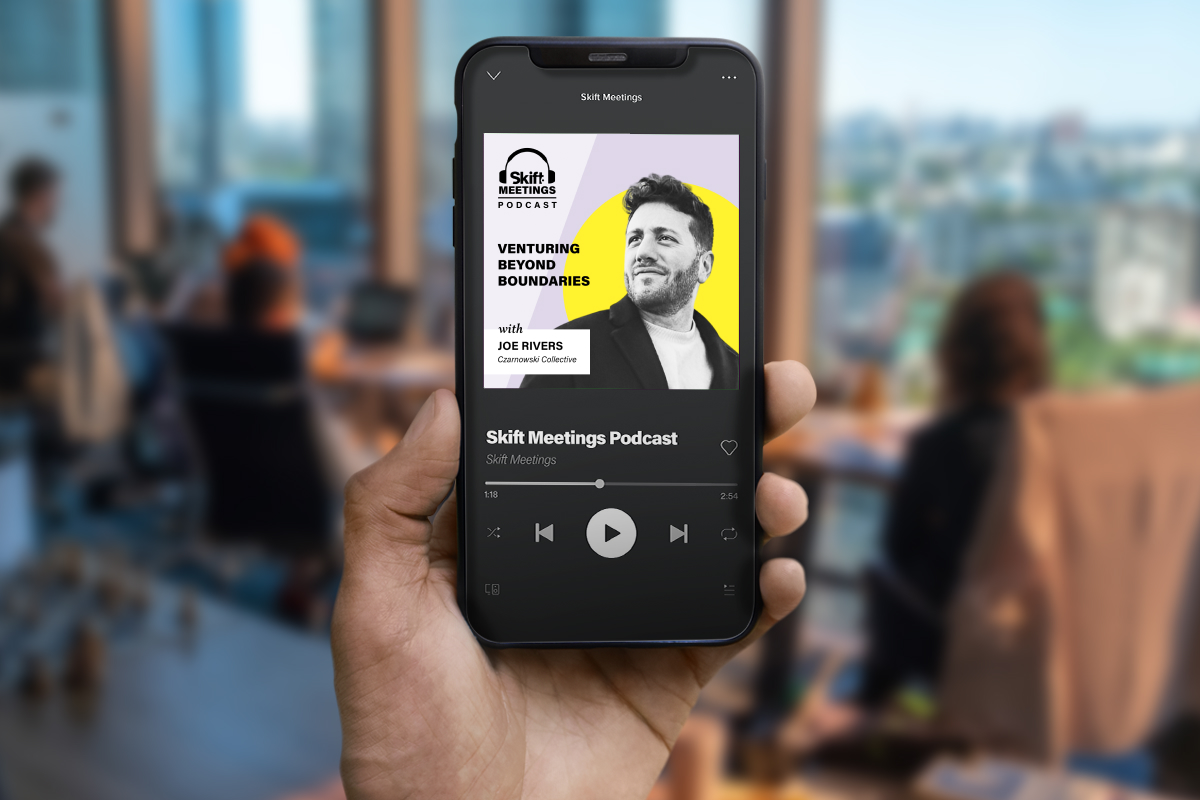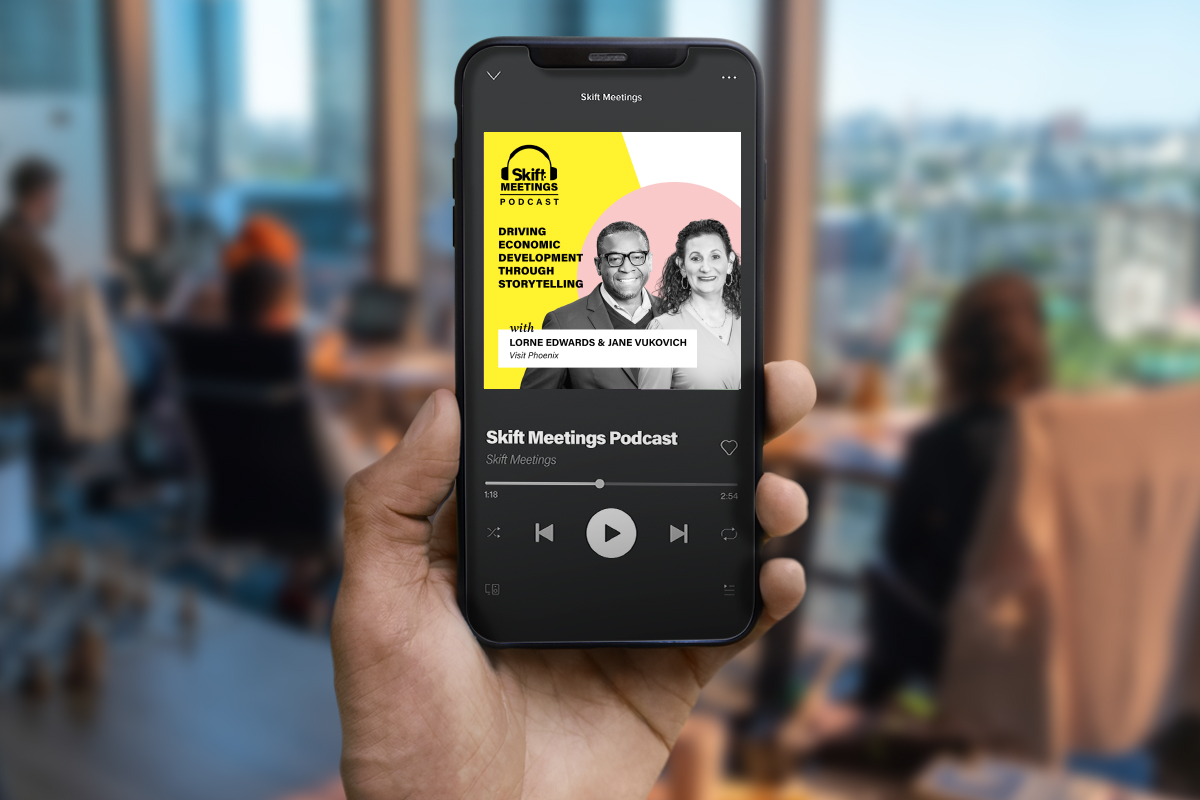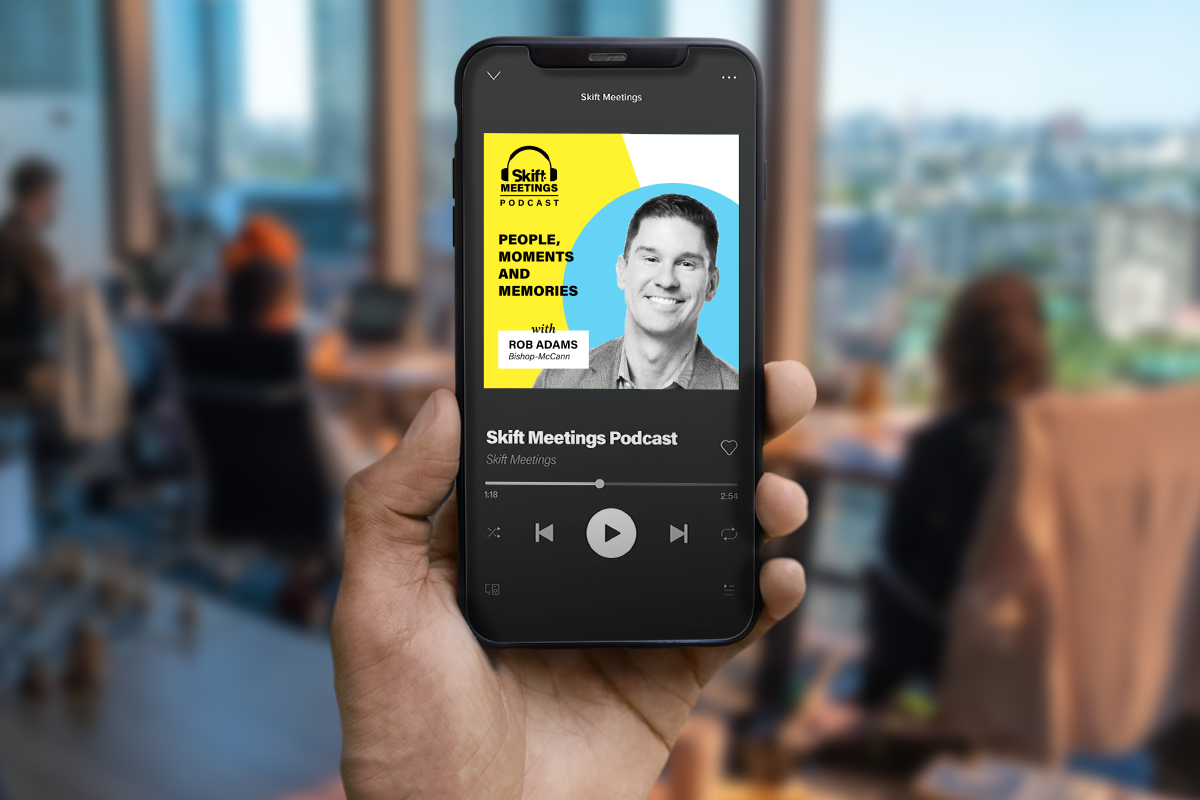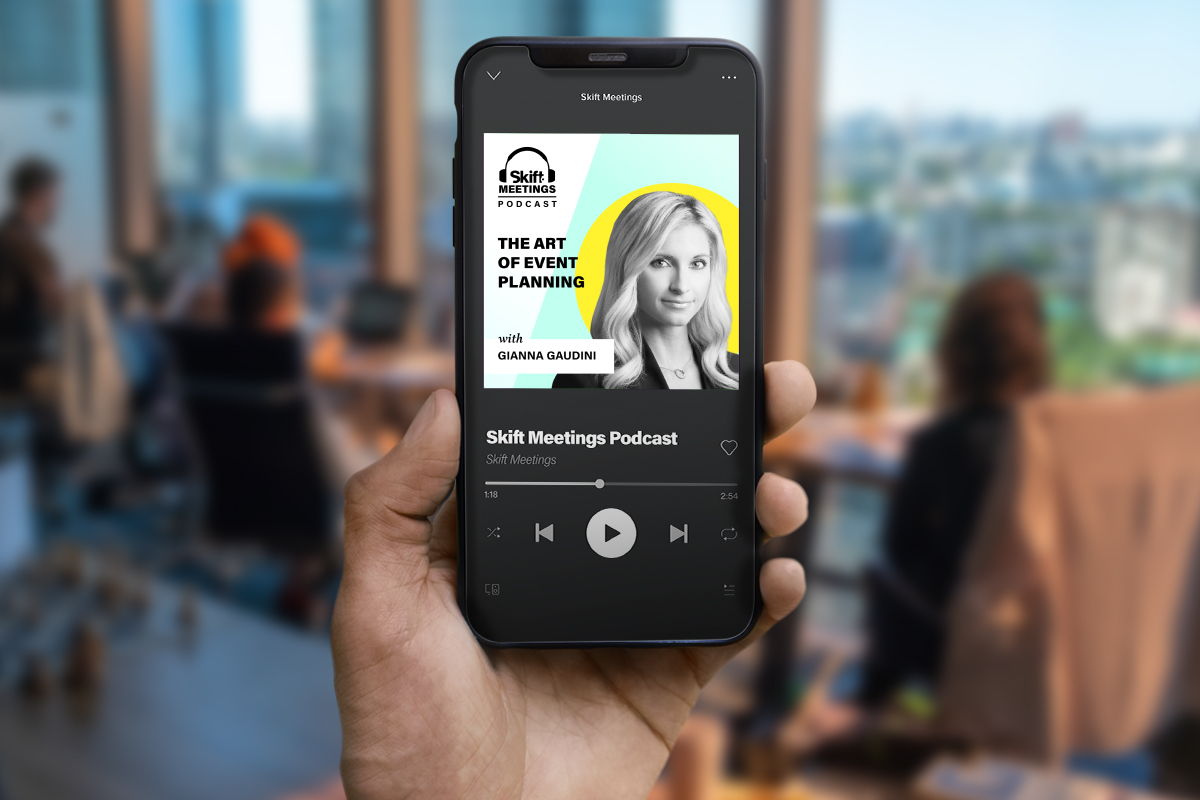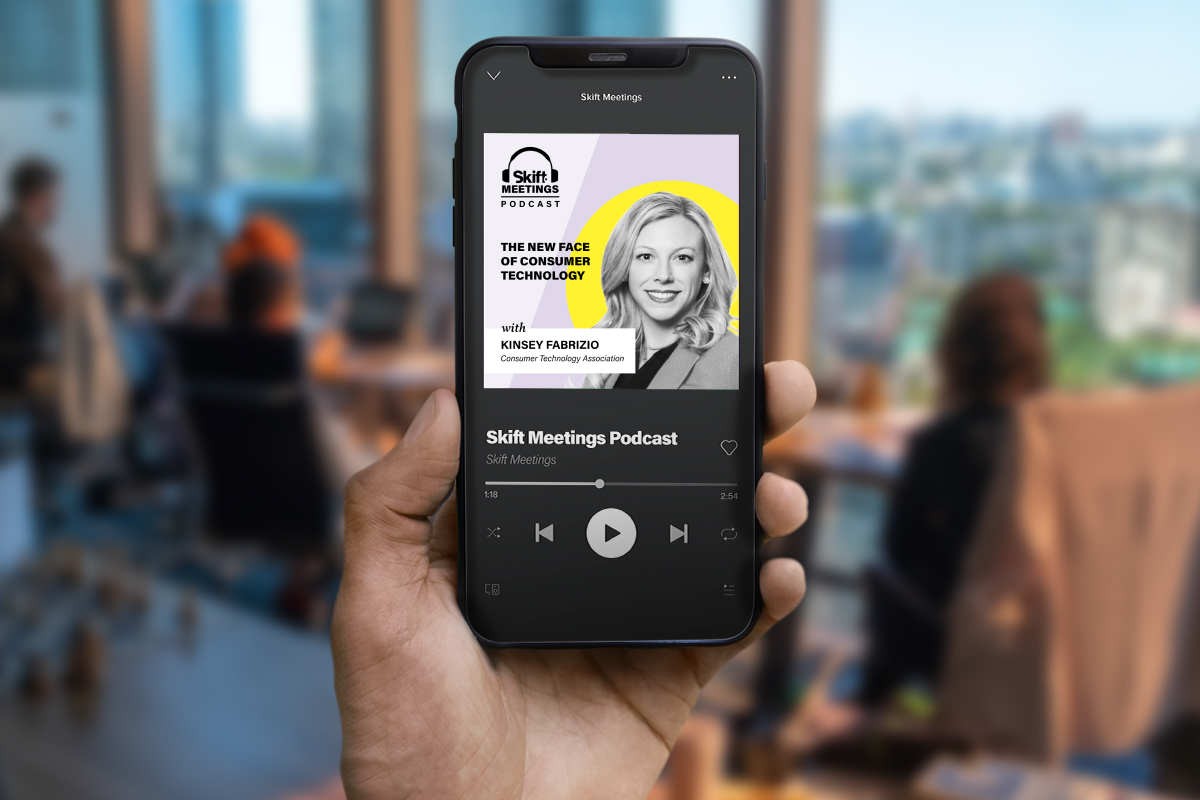Skift Take
In this episode of The Event Manager Podcast we are joined by Rachael Riggs, Wellbeing Leader at Maritz Global Events, to discuss the evolution of wellbeing in events, in particular the unique sustainability role at Maritz Global Events.
As with many of our guests, the events industry wasn’t their original career path. Rachael Riggs, Wellbeing Leader at Maritz Global Events’ originally planned to be a corporate fitness professional, having studied kinesiology and exercise physiology at Indiana University. At the time, her dream job was to work at Apple’s Cupertino offices as their corporate fitness professional, which had a dedicated Corporate Fitness Center. She began working for the Association for Business in Fitness, which was for those working in the fitness industry, which is where she fell in love with the meetings and events industry.
She then joined the launch team of Ambien, a drug to aid with sleep, traveling the world with a sleep wellness programme, before realizing she wanted her love of events and wellness to come together. Achieving this was a process, during which she had many other experiences and career development opportunities. It wasn’t until 2018, whilst working with PCMA, that she noticed the difference between older and younger event attendees and their approach to how they navigated the events they were attending, which she explains.
Subscribe to the Skift Meetings Podcast: Apple Podcasts | Spotify | Overcast | Pocket Casts | Google Podcasts | Amazon | RSS
This led to Riggs being approached by the team at Maritz, whom she knew from her years within the industry, and they provided her with their research team to study these differences and what they meant. You’ll hear Riggs explain some of these research projects, what came out of this, the tweaks that were made and why, as well as the five dimensions of wellbeing that were established from this research. Following this work, she was hired by Maritz in 2019 and officially began her role in March 2020. However, due to COVID, Riggs was furloughed in May of 2020, just two months into her new role. During this furlough period she was part of the Events Industry Council’s (EIC) COVID recovery task force, as well as being a PCMA Chapter President, before resuming her role at Maritz in the fall of 2020.
As for her role, Riggs feels that her job is focused on trying to bring people together and connect them through various activations and experiences. Her particular role with Maritz sees her work with their design studio, which is a boutique agency within the business that works with both corporate clients as well as associations, trade shows and live events. Riggs works with these clients to help them design their events around wellbeing, providing examples of what this could include. Riggs adds that her role also includes helping evolve staff and attendee wellbeing and creating a network of wellbeing suppliers.
Riggs explains what she believes is the difference between wellbeing and wellness. For Riggs, wellbeing is a state of mind and one of the five dimensions of wellbeing. If one of these dimensions isn’t functioning properly it will have a negative impact on your overall wellbeing.
With wellness, Riggs believes that this is more of an activity, for example running is a personal wellness activity. Riggs notes that some countries are looking at the correlation between a populations wellbeing score and the country’s GDP, adding that there is a TED Talk which discusses the need for countries to look at the wellbeing index of their population.
Riggs discusses the long term impacts of incorporating wellbeing at events, using the Sustainability Challenge at IMEX Frankfurt 2022 as her example. This event allowed Riggs and her team to showcase what IMEX is doing with their sustainability efforts to enhance the show, providing examples of what this included. The Challenge got them walking, learning about sustainability and sustainable practices and having prizes involved. Having attendees be actively involved in discovering these elements means that they are often more engaged and learn more than if you just give them a written document with the information you want them to be aware of. Riggs adds that with this approach, you can see the impact it is having on those that once weren’t engaged with the idea of wellbeing, particularly if they are attending multiple events where this approach is incorporated. Riggs also discusses making these activities accessible for attendees, how to incorporate this approach into virtual events and what to take into consideration for this environment.
What does it mean to design an event with wellbeing as a core design principle? Riggs believes that when an attendees feels cared for, communicated with, informed, and that they are contributing, then they’re going to come away having had a great experience. As such, these principles have to be considered when designing an event with wellbeing in mind. Riggs provides the example of downtime periods, noting that these demonstrate to attendees that you value their time and you don’t want to schedule every hour of the day that they are at the event, instead giving them periods to just take it in and enjoy the experience. However, Riggs does note that you can only provide these suggestions for how they spend that downtime period, you cannot force them to use it in a wellbeing capacity. If an attendee needs to use that time to check in with the office, that is what they need to do, but at least you are providing them with a dedicated time period for this. Riggs adds that one of the most impactful techniques is to start the event later, which people value, but above all Riggs believes that to design an event with wellbeing in mind requires you to create something that is inclusive and with a flexible environment.
As Riggs noted in her introduction and career journey, she has been trying to marry events and wellbeing together for quite some time. So what prevented the event industry from connecting with the idea of wellbeing before now? Riggs believes that as an industry and a society we were moving at a non-stop pace, which didn’t give us the time to think about or address the issue of wellbeing. She adds that it was something that was slowly being considered post-9/11, however we then faced an economic crisis and businesses and industries were just trying to survive. However, COVID was the moment where everything changed; the world was forced to slow down, and in some instances stop entirely, which led to the industry considering how we design events, in particular how to do this differently and other ways in which we can work on accommodating people. Riggs also discusses hybrid working, and whether this was a natural evolution with wellbeing in mind. This also leads to the topics of the great resignation, the choices people now have that weren’t available pre-COVID, and the alternative ways of doing things that are now available to people and businesses.
Rachael feels that the future will require event planners to ensure flexibility and choice are part of the event design, otherwise it will negatively affect the event’s success. She also believes that attendees are going to begin to evaluate events and make decisions to attend, with attendees looking for innovative and collaborative environments, where they feel that they can grow. If even professionals don’t incorporate this into the design elements, then they will be left behind. Riggs also argues that sustainability and sustainable practices need to become a deeper part of the event industry, as it is Riggs’ belief that if this does not happen there is a high likelihood that the industry will face regulation. Riggs notes that the fashion industry relied on consumers to make the sustainable choice when making their purchases, however the goal didn’t turn out as planned. The events industry should learn from this experience and design with sustainability in mind, instead of leaving it up to attendee choice, creating a business-to-business (B2B) model which allows for impacts to be made. Riggs also adds that from a wellbeing perspective, sustainability is part of the five dimensions of wellbeing, falling under the environment category.
As with all our episodes we cover so much more than this, with Riggs giving detailed examples of work that encompasses events, wellbeing and sustainability to name just three.
To listen to this episode, and catch up on previous ones, head to your favorite podcast app. If you never want to miss an episode, then hit subscribe whilst you’re there!

